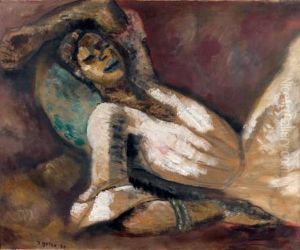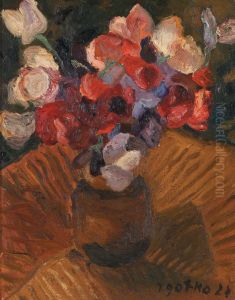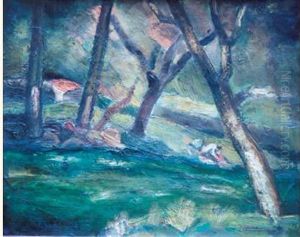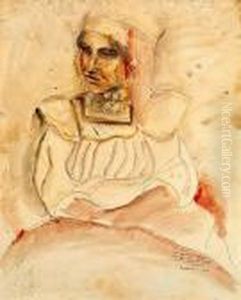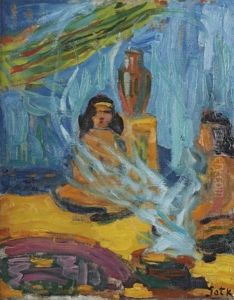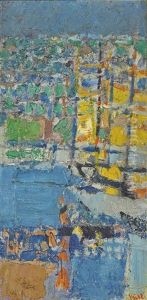Jacques Gotko Paintings
Jacques Gotko, born Ignace Gotkowsky, was a multifaceted artist of Polish origin, known for his work as a painter, graphic artist, and stage designer. He was born on August 24, 1900, in Moscow, Russia, into a Polish family. The political turmoil and the anti-Semitic environment of the time had an impact on Gotko and his family, contributing to their move to Paris, France, where he later adopted the name Jacques Gotko.
In Paris, Gotko immersed himself in the flourishing art scene, becoming an active participant in the city's cultural life. His early work reflected the influence of the Ecole de Paris, and he was particularly known for his portraits and scenes of Parisian life. Gotko's artistic style was characterized by a blend of realism and expressionism, with a focus on capturing the emotional essence of his subjects.
During the 1930s, Gotko's reputation as an artist grew, and he exhibited his work in various salons and galleries throughout Paris. He also ventured into stage design, working on sets and costumes for theaters, which further diversified his artistic repertoire.
The outbreak of World War II had a devastating impact on Gotko's life and career. As a Jew living in Nazi-occupied France, Gotko was at risk. In 1941, he was arrested and interned at the Drancy internment camp near Paris. Despite the harsh conditions, Gotko continued to create art, documenting the dire circumstances within the camp through his drawings and paintings.
Tragically, Jacques Gotko's life was cut short during the Holocaust. He was deported from Drancy to the Auschwitz concentration camp, where he perished in 1943. Despite the brevity of his career, Gotko left behind a body of work that serves as a testament to his artistic talent and his resilience in the face of adversity. His works are now recognized for their historical significance as well as their artistic value, providing a poignant glimpse into the life of an artist during one of history's darkest periods.


